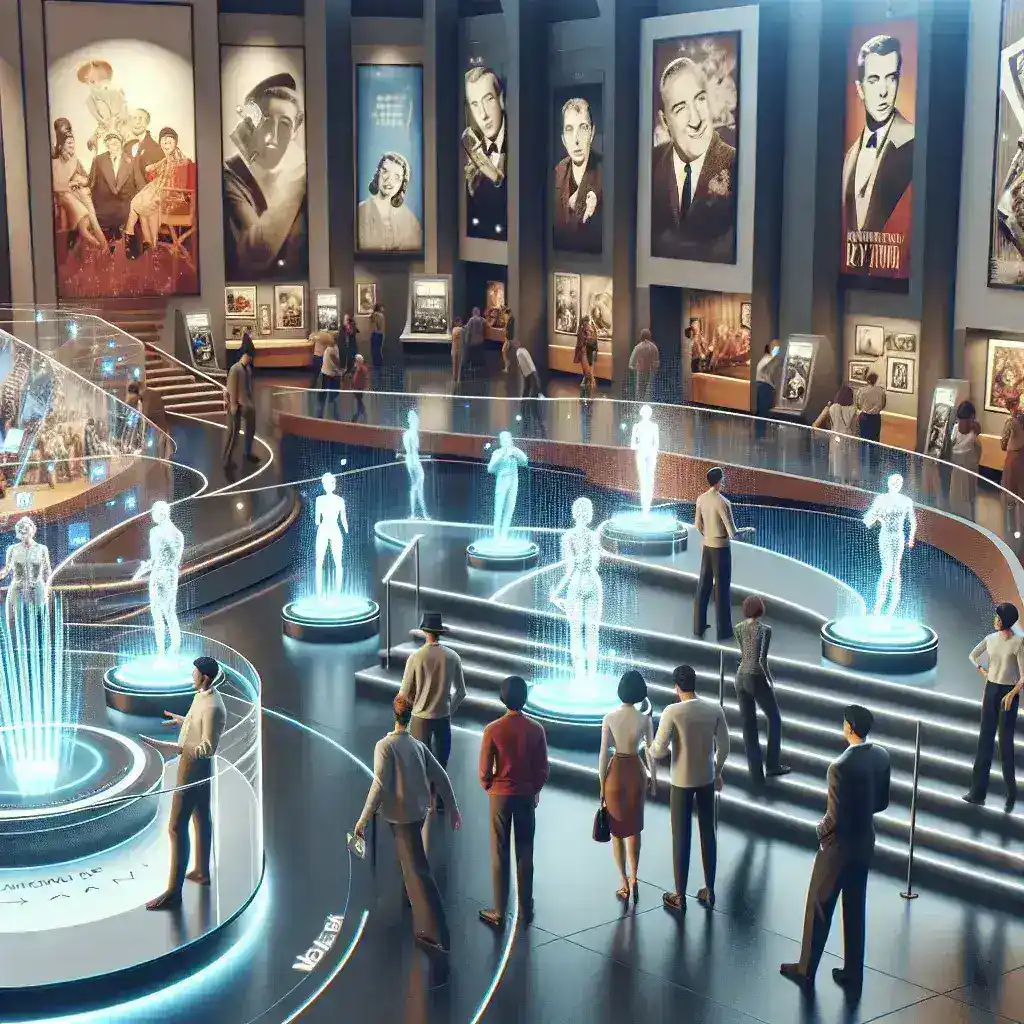Warner Bros. Expands AR Tie-Ins for Museum Exhibitions
Introduction
In an era where technology continuously reshapes our interactions with culture and entertainment, Warner Bros. has taken a significant step by expanding its augmented reality (AR) tie-ins for museum exhibitions. As the world embraces the digital transformation, this pioneering move not only elevates the visitor experience but also positions Warner Bros. as a leader in integrating entertainment with educational initiatives. This article delves into the implications of this expansion, the technology behind it, and the future it heralds for museum exhibitions.
The Rise of Augmented Reality in Museums
Augmented reality has emerged as a revolutionary tool in the museum space. By overlaying digital information onto the physical world, AR allows visitors to engage with exhibits in ways that were previously unimaginable. Museums have begun to recognize the potential of AR to enhance storytelling, create immersive experiences, and attract a broader audience.
Historical Context
The journey of AR in museums began in the late 20th century when digital technologies started to gain traction. Initially, AR was limited to simple applications and demonstrations. However, as smartphone technology improved, so did the capabilities of AR, paving the way for more interactive experiences. By the early 2010s, museums such as the Smithsonian and the British Museum began experimenting with AR to enrich their exhibits.
Warner Bros. and Its Vision
Warner Bros. has a long history of storytelling through various mediums, including film, television, and video games. With the advent of AR, the company recognized an opportunity to further engage audiences beyond traditional boundaries. By collaborating with museums, Warner Bros. aims to create immersive experiences that captivate and educate visitors about its iconic franchises.
How AR Enhances Museum Exhibitions
1. Interactivity: AR allows visitors to interact with exhibits in real time. For instance, scanning a QR code next to a display could trigger animated characters or scenes from a movie, providing a deeper understanding of the content.
2. Storytelling: Through AR, stories can be layered onto physical artifacts, creating a narrative that connects visitors emotionally. This approach not only entertains but also educates, as visitors learn about the cultural significance of the exhibits.
3. Accessibility: AR can bridge language barriers by providing translations and contextual information in multiple languages, ensuring that a diverse audience can engage with the material.
Current and Upcoming AR Initiatives
Warner Bros. has already initiated several AR projects within museums. Notably, their collaboration with the Los Angeles County Museum of Art (LACMA) has showcased how AR can bring classic artworks to life. Visitors can use their smartphones to access exclusive content related to Warner Bros. movies and characters, enriching their experience.
Examples of AR Experiences
- Interactive Displays: At select exhibitions, visitors can engage with holographic displays featuring characters from the Wizarding World, allowing them to interact in real-time.
- Virtual Tours: AR-enabled virtual tours let attendees explore the history of iconic Warner Bros. films, complete with behind-the-scenes footage and interviews with filmmakers.
- Gamification: By introducing game-like elements, such as scavenger hunts using AR, Warner Bros. encourages exploration and deeper engagement with the exhibits.
The Future of AR in Museums
As Warner Bros. continues to expand its AR initiatives, the future of museum exhibitions looks promising. Here are some predictions for the coming years:
1. Increased Collaboration
More partnerships between entertainment companies and museums are expected, leading to unique exhibitions that blend art and popular culture. This collaboration will open doors for innovative experiences that attract diverse audiences.
2. Enhanced Personalization
Future AR technologies will likely incorporate machine learning and AI to offer personalized experiences based on visitor preferences, making each visit unique and tailored to individual interests.
3. Broader Accessibility
As AR technology becomes more affordable, its integration into museums will broaden, allowing smaller institutions to adopt similar innovations. This democratization will enhance cultural access for all.
Challenges and Considerations
Despite the excitement surrounding AR, several challenges must be addressed:
- Cost: Developing AR experiences can be expensive, deterring smaller museums from incorporating this technology.
- Technological Barriers: Not all visitors may have access to smartphones or the necessary technology to engage fully with AR experiences.
- Content Updating: Regular updates and maintenance of AR content are essential to keep experiences fresh and relevant.
Conclusion
Warner Bros.’ expansion of augmented reality tie-ins for museum exhibitions marks a significant milestone in the intersection of entertainment and culture. This innovative approach not only enriches the visitor experience but also revitalizes the way stories are told and shared in museum settings. As the technology continues to evolve, audiences can look forward to even more immersive and engaging experiences that bridge the gap between the digital and physical worlds.
Final Thoughts
As museums embrace AR, they will not only attract new audiences but also redefine their role as cultural educators. Warner Bros. is at the forefront of this evolution, demonstrating the power of storytelling in a digital age. The future of museum exhibitions is bright, and it promises to be an exhilarating journey for visitors of all ages.

